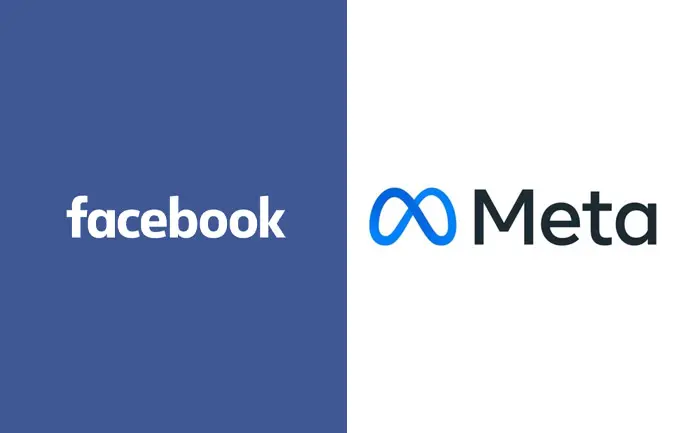What are the steps of a brand refresh process?
Share this article

While rebranding can be described as a revolution, a brand refresh is an evolution that helps you stay relevant to your customers and meet their expectations. Read what is this process all about and what are the steps you have to follow to complete it.
First off, let’s tackle the most important question – how is a brand refresh different from rebranding? Aren’t these two processes about the same thing? Well, not necessarily.
Without a doubt, both rebranding and brand refresh have a lot in common. Both of these processes are about keeping your brand fresh, updated and relevant to your customers. Both of them entail some changes in your communication and brand identity. So what’s the difference? Basically, it’s all about your needs and your goal. Let’s talk a bit more about that.
In general, rebranding is a much more comprehensive process. Companies going through rebranding usually change something else about their business as well. For instance, mergers and acquisitions and a new brand transformation strategy are a frequent reason for rebranding. We could say that rebranding is a revolution in the way your company works, looks and communicates. After rebranding, you’re not necessarily the same company you were before. Rebranding is an excellent opportunity to tell the world, “we are now something new, something better!”.
On the other hand, a brand refresh is an evolution. More or less, you stay with the same brand you had before. All you do is implement some tweaks and adjustments to tailor it towards current market needs. You need to implement a brand refresh when, for example, you:
To show you what we have in mind, let’s use two high-profile examples of rebranding and brand refresh.
In late 2021, Facebook, Inc. announced the first major rebranding in the company’s history. Now, they are called Meta:
Image source: https://www.thelivemirror.com/facebook-changes-name-to-meta/
That’s because the company behind the biggest social media platform ever is now so much more. They are now active in more areas and sectors, and they needed a new name that would reflect the new personality of their brand, their updated portfolio, and their positioning. That’s what rebranding is all about – you end up with something substantially different. You need rebranding when you want to introduce some major changes in your company.
Here, we can’t talk about a revolution; their logo and brand identity has been pretty much the same since 1987. However, in 2011, they decided to ditch the “Starbucks Coffee” name from their logo.
Image source: https://medium.com/@nathali4k/logo-history-the-evolution-of-starbucks-c2dd7a42f4fb
The reason was apparent – The Starbucks brand became so much more beyond coffee. But in general, they stayed the same company that simply adjusted to the market. They still offer coffee, tea, cakes, sandwiches, and a place to spend some time with friends and family. They didn’t need a rebranding because their previous logo was already established and worked. Some tweaks were all they needed. And that’s when you need a brand refresh.
And yes, frequently, people don’t see the difference between rebranding and a brand refresh. But we, as a branding agency, see one. And that’s crucial because there are two different ways leading to them. So what we’re going to do now is show you how to tackle a brand refresh. We will show you five essential steps that enable you to conduct a brand refresh in your company.
As always, it all starts with thorough research. You have to know why you need to conduct brand refresh and what for. At this point, you can ask yourself a few questions:
How do you know whether your brand is still relevant? There are no one-fits-all answers. It all depends on the ability to achieve your image and business goals. For instance, if you struggle to raise prices, attract new target audiences or expand to a new market, you most likely need a brand refresh.
If the answers to those 3 questions are no, you ought to think about brand refresh. What are the next steps?
You have to know who you want to talk to. People and their needs change. Here’s a good example – Hugo Boss. In early 2022, they decided to attract a younger audience and make the difference between their brands more transparent. As it happens, differences between the Hugo and Boss brands have not always been clear to the end consumer. That’s why Daniel Grieder, Hugo Boss CEO, decided to pursue this project. As a result, they changed the name of their core brand (BOSS) and launched a campaign “Be your own BOSS”. Take a look at this video:
Perhaps, after several years, you need to adjust your target audience. Perhaps also your customers have different needs. You should be aware of such evolutions in your business in order to conduct a successful brand refresh procedure.
Consider your current position: have you achieved the perception and association you set out to achieve with your customers? Does your position still hold relevance to your current brand? If you feel that you are not attracting the attention and engagement with your brand that you’ve aimed for, perhaps some adjustments are needed.
A brand refresh almost always means modifying the brand identity. That’s because it’s one of the most important elements of every brand. You have to know what you want to change and why. Starbucks removed the word “coffee” from their logo because they didn’t want to be perceived as an ordinary coffee shop. If there is something in your brand identity that labels you the wrong way or projects your brand in an undesired way, you need to change it. However, it’s important to maintain a level of familiarity with your identity, so that the new and improved brand is not lost or rejected by your customers.
Lastly, you need a strategy to communicate your rebranding announcement to the audience. You want people to know that you’ve gone through a change and why, correct? Use your marketing channels such as social media profiles, websites and newsletters to tell people:
This way, you can get more people on board, and many of them will surely be more engaged than before (after all, that’s the whole point, isn’t it?).
That’s how you should approach the brand refresh procedure. If you’re working on it with an experienced branding agency like Admind, they will guide you through the whole process and tell you what to consider at each step. At least, that’s what we do for our clients.
Lastly, we need to discuss one final element of a brand refresh.
You have to remember that a brand refresh is exactly what the name says – a refresh. An adjustment. Not a whole rebranding process. You shouldn’t throw away what you already have and what’s successful. If it’s been working, it’s been working for a reason. Every change in your branding should be well-thought-out and based on real premises. Again, take a look at Starbucks’ logo. Even after 35 years, they are still using the same symbol (a siren), the same circular shape, and even the same green colour. Why? Because this setup simply works. And that’s the way to go!
If you are interested in refreshing your brand, we are at your service. Admind is a global branding agency; we’ve helped dozens of clients with their brands, and we are eager to help you, too! Just go to our contact section and send us a short message. We’ll take it from there.



